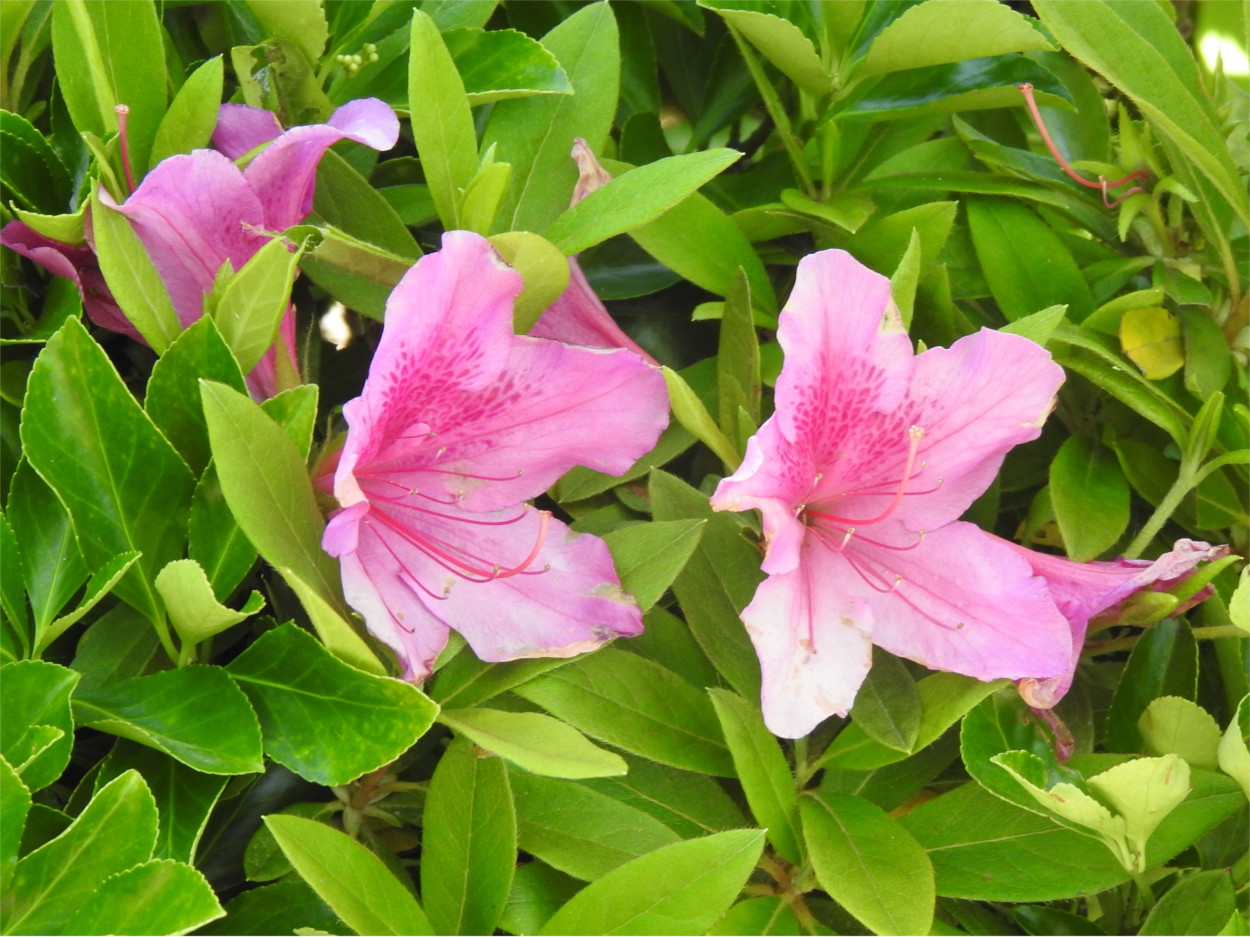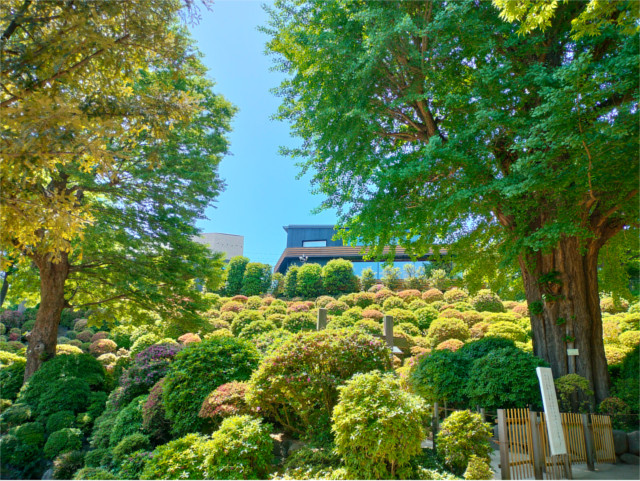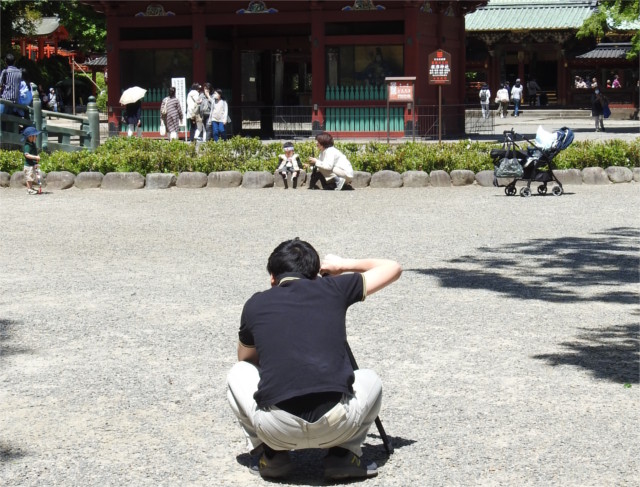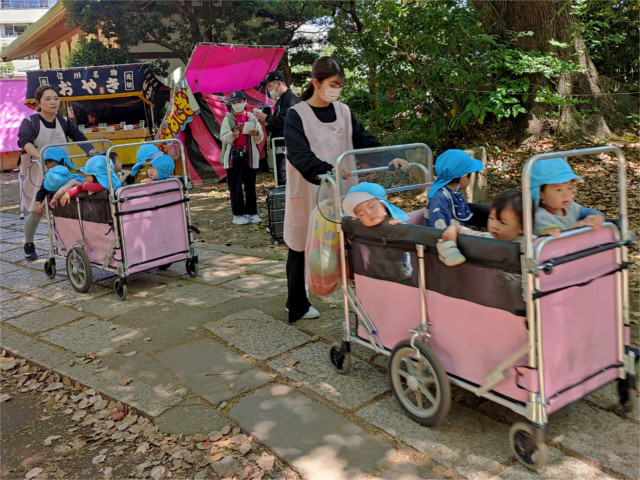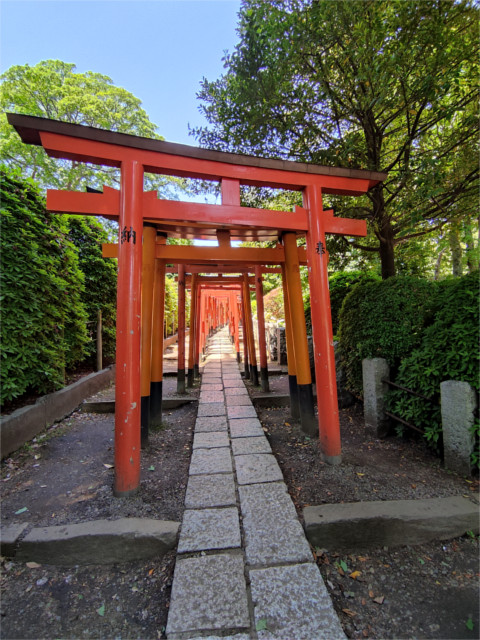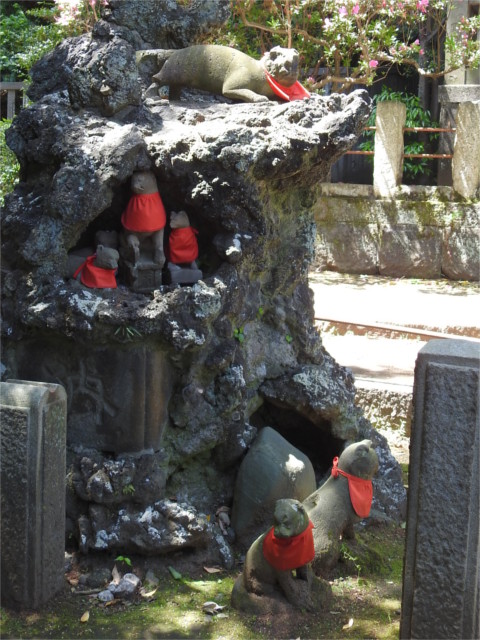Azaleas are really something to celebrate, so the idea of a Shinto shrine in the middle of Tokyo which has an Azalea festival, the Tsutsuji matsuri, at the end of every April is fascinating. We got there two days after it ended, and caught the tail of the season. I’d spent two years planning a stay in Sikkim this April to watch the rhododendron bloom. It was a bit of a disappointment that I had to cancel that plan in order to visit Japan. But now I was seeing rhododendron flowers in any case: azaleas belong to the genus rhododendron.
Our first view of the Nezu shrine’s azalea garden (below) told us how narrowly we’d missed the peak season. A Japanese couple our age sensed our disappointment and led us to a poster with a calendar of the temples around Tokyo with dates when the azaleas were likely to bloom. An hour’s ride by the metro would take us to a place where they would bloom now. We thanked them and said we would take a walk around the shrine first.
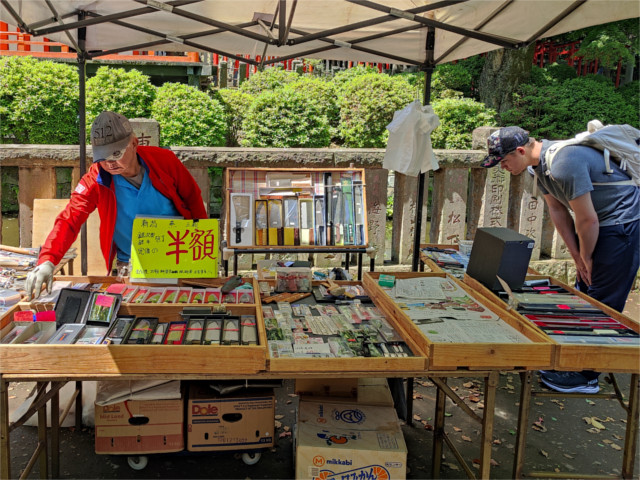

Temple festivals are large and colourful affairs, and if we’d arrived the previous week we would certainly have heard music and seen quite a bustle. Now just a couple of stalls remained. The Family examined the one with lots of home ware, and called me over to examine the kitchen knives. I was hovering around the shop selling dango. I love these glutinous balls made from rice flour, especially the smoky taste of mitarashi dango which are rolled in a mixture of soy sauce and molasses. A stick cost 500 yen, five times more than what I’d paid for a stick in Nikko the previous morning. That’s Tokyo for you!
The Nezu shrine is not on top of any tourist’s list. It certainly wasn’t on ours, but we were glad we came. It wasn’t very crowded, and most of the people who we saw were local. A family was busy taking photos of their younger son: the mother dressing the child as a samurai while the older brother played with some of the props and the father fussed with his camera.
When a place is used largely by the locals you see enigmatic sights. What was I to make of two trolleys full of toddlers being pushed along the path next to the shrine? Was this an outing from a day care? If it wasn’t the Saturday at the beginning of Golden Week, I would have embraced this idea. But on this long holiday, is that what it was?
